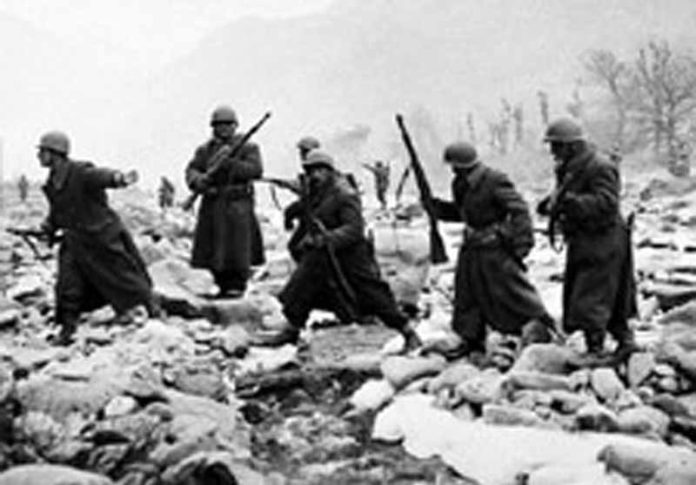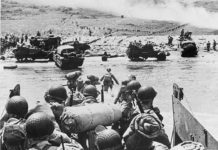The Garand entered service in 1937 and served on all fronts in World War Two. However it remained in production more than a dozen years after the War.
During the Korean conflict the Garand continued to see front-line use as a primary infantry weapon and orders were placed for more. UN troops in the Greek Expeditionary Force (GEF), the Turkish Brigade and the Philippines battalion as well as the units of the Republic of Korea (ROK) army carried the M1 into combat. French Foreign Legion men in Algeria and Indochina carried the 8-round widow-maker as a sniper and marksman weapon. In 1957 the M1 was officially replaced by the M14 rifle.
The M14 fired a slightly shorter round (7.62x51mm NATO) but was capable of fully automatic fire and used a detachable 20-round box magazine. With this change, inventories of Garands began to be rapidly liquidated. These weapons have been seen often in the documentation of combat photojournalists during countless African conflicts, the Nicaraguan civil war, the Iran-Iraq war, and the 1974 Turkish invasion of Cyprus. They still are seen in combat today stretching from insurgents in Iraq to Philippine regional police fighting their own insurgents.
Vietnam
The M1 was widely seen in the hand of local indigenous defense groups in the early stages of the Vietnam conflict. US Green Berets often still carried the weapon and Special Forces legend Major James Nicholas “Nick” Rowe had one as his personal weapon when he was captured in 1963. Nearly a quarter million M1s used by the former ARVN forces were captured in the fall of Saigon and subsequently wound up on arms markets around the world. Open source intelligence documents even report the use of some of these captured M1s in Warsaw-bloc false flag operations and as communist military aid during the Cold War.
Stateside Use of M1 rifles During the Turbulent 1960s and 70s
By the time the M14 had been itself replaced by the new M16 rifle in the late 1960’s the M1 was relegated to use in second-line reserve units, honor guards and stateside Army National Guard detachments. It was in the hands of these ‘weekend warriors’ that the M-1 was seen as the iconographic weapon of the turbulent riots and anti-war demonstrations of the Nixon administration. The Kent State incident, Watts Riots, Newark Riots, and many others are accompanied with pictures of Guardsmen enforcing the law with bayonet- fixed M1’s in hand.
The end of the Vietnam conflict and the subsequent reduction in troop strength at the close of the draft in 1973 left a surplus of M16 and M14 rifles available. With the new Total Force Policy of General Creighton Abrams, Guard units were to be equipped with the same arms as regular army troops. These two factors led to the M-1’s being pulled from National Guard armories wholesale by 1975.
Sources:
- Correspondence with Civilian Marksmanship Program
- Department of the Army, FM 23-5 Field Manual for the US Rifle Caliber .30, M1 May 1965
- Duff, Scott “The M1 Garand: WWII”, the “M1D Sniper rifle”, the “M1C Sniper Rifle” and “The M1 Garand Serial Numbers and Data Sheets” Scott Duff Publications
- FOIA Request FA-10-0013 (UNCLASSIFIED) / TCC-RI FOIA #10-03-05 / M1 Garand Rifles.
- Senich, Peter “The Long Range War; Sniping in Vietnam” 1994
- Walter, John “Rifles of the World” (3rd ed.). Krause Publications 2006








